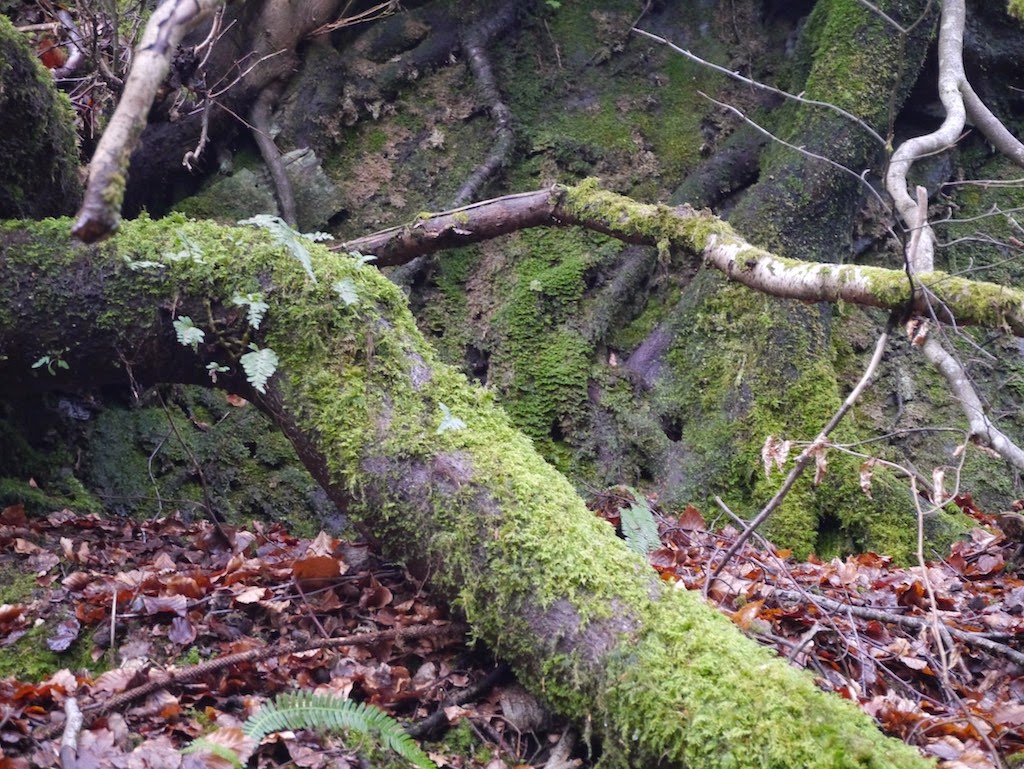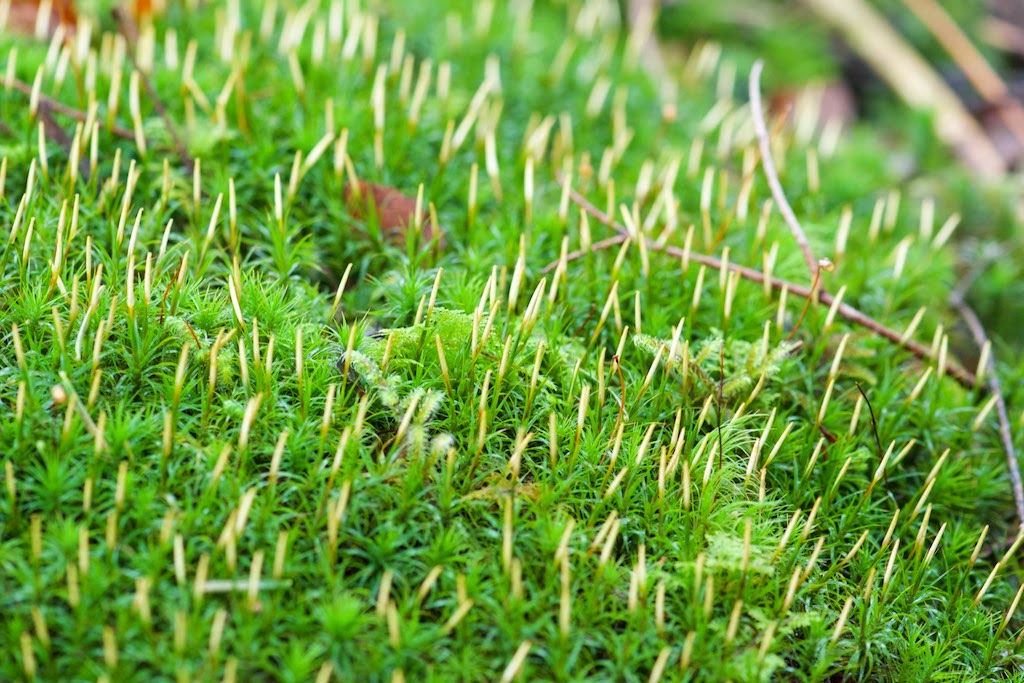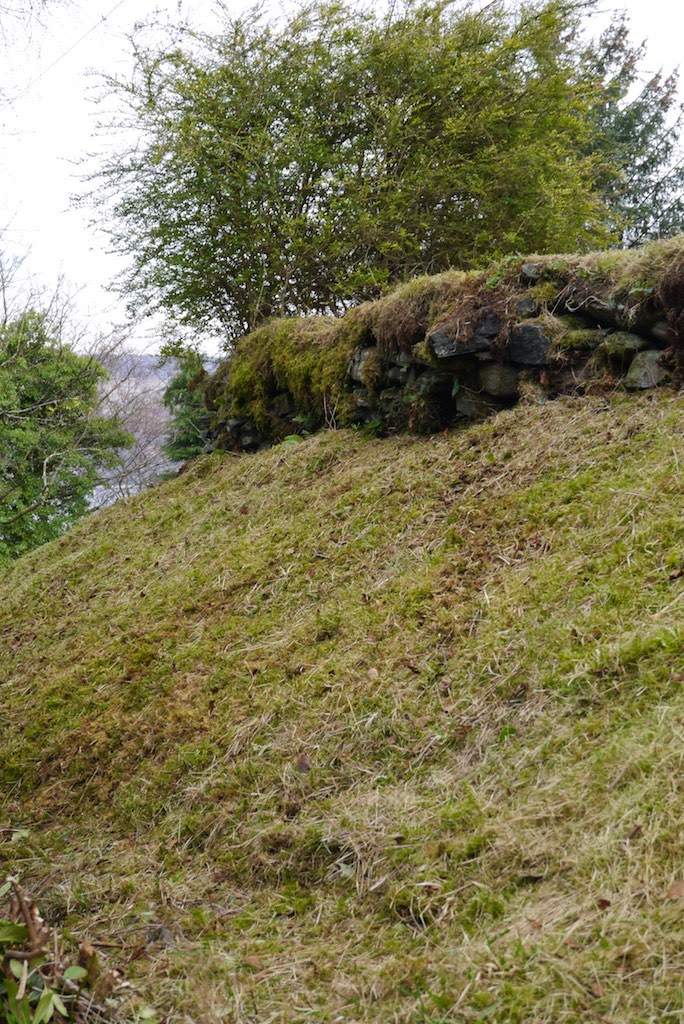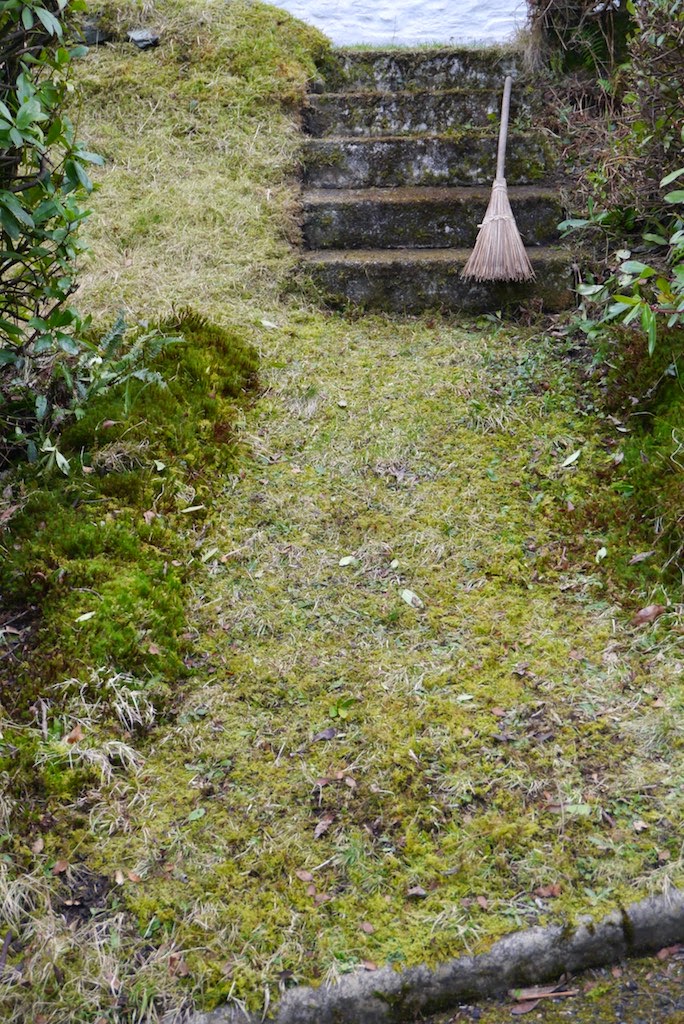 |
| Hazel flower |
I just checked in our Collins Tree Guide and it says that old hazel plants may reach 15m in height. Our UTH (up the hill) tree reaches about that height (18 long paces) except that it is horizontal so I should probably call it length. I started pacing from just beside the boulder in <<< this pic, sploshed through the boggy bits along the length of the trunk,
 |
 |
| Fallen but flowering hazel |
and had reached eighteen by the time I got to the end where the young shoots off the old trunks are flowering and budding. If you enlarge the photo by clisking on it, you may be able to see the puddle underneath in whcih I was hoping to find frog spawn but didn't.
Nearby is a fallen birch tree on which I found this frilly fungus.
 |
| Fungus on birch |
and this resupinate one.
And all along, under and beside both horizontal trees were small bluebell shoots. I must go up there again in a few weeks when they should be flowering.
 |
| Bluebell shoots under birch |
This is the root ball of the birch. You can see the chunks of slate around which its roots have grown and, to the right in the photo, a very large slab. The foundations, terracing, cellar and lower walls of our house are made of this locally available rock. Beyond the birch root ball are the huge roots of a beech tree which towers above the hollow where the hazel and birch grow.
The exposed rock under the beech tree is covered in liverworts, mainly White Earwort (Diplophyllum albicans) and Overleaf Pellia (Pellia epiphylla), I think.
 |
| White Earwort looking very green! It is white when dry. There was a constant drip of water over the rocks where this was growing. |
.jpg) |
| Pellia epiphylla |
I liked the dark colour of the collapsed Scaly Male Fern (Dryopteris affinis) leaves from last year and concluded my hazel flower hunt thinking that there's a lot to be said for collapsed plants.



































.jpg)







